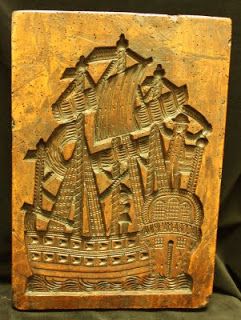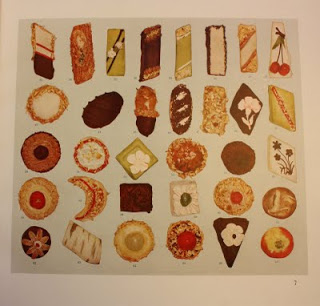The Clements Library and the Hatcher Graduate Library present an exhibit giving an overview of the history of cookies in “200 Years of Cookies.” The exhibit showcases cookbooks from both collections, as well as 19th century American cookie cutters and cookie molds from the Clements.
The exhibit is now open in Hatcher’s North lobby and Gallery, and will be there through January 15th.
 The history of cookies is probably impossible to trace back to its beginnings. The Roman writer Apicius gives a description of a wheaten paste that was cooked, cooled, and fried, then served with honey and pepper. This technique was used in the Middle Ages to make small sweetened biscuits called cracknels, which continued to be made into the 19th century. Another early form of cookie was sweetened and spiced dough made up into as flat gingerbread cakes, often decorated or baked in elaborate forms such as those pictured in these cases. Traditional forms of gingerbread and its relatives lebkuchen and leckerli are still made for festivals in northern European countries, notably Germany and Switzerland.
The history of cookies is probably impossible to trace back to its beginnings. The Roman writer Apicius gives a description of a wheaten paste that was cooked, cooled, and fried, then served with honey and pepper. This technique was used in the Middle Ages to make small sweetened biscuits called cracknels, which continued to be made into the 19th century. Another early form of cookie was sweetened and spiced dough made up into as flat gingerbread cakes, often decorated or baked in elaborate forms such as those pictured in these cases. Traditional forms of gingerbread and its relatives lebkuchen and leckerli are still made for festivals in northern European countries, notably Germany and Switzerland.
 The books and recipes shown in this exhibit follow the career of cookies through 200 years of publication, beginning with recipes dating from 1805 with The art of cookery made plain and easy (the 1st American imprint of a work originally published in London in 1747) and continuing to cookbooks of the present day, all drawn from the collections of Hatcher Library and the Janice Bluestein Longone Culinary Archive at the William L. Clements Library.
The books and recipes shown in this exhibit follow the career of cookies through 200 years of publication, beginning with recipes dating from 1805 with The art of cookery made plain and easy (the 1st American imprint of a work originally published in London in 1747) and continuing to cookbooks of the present day, all drawn from the collections of Hatcher Library and the Janice Bluestein Longone Culinary Archive at the William L. Clements Library.
